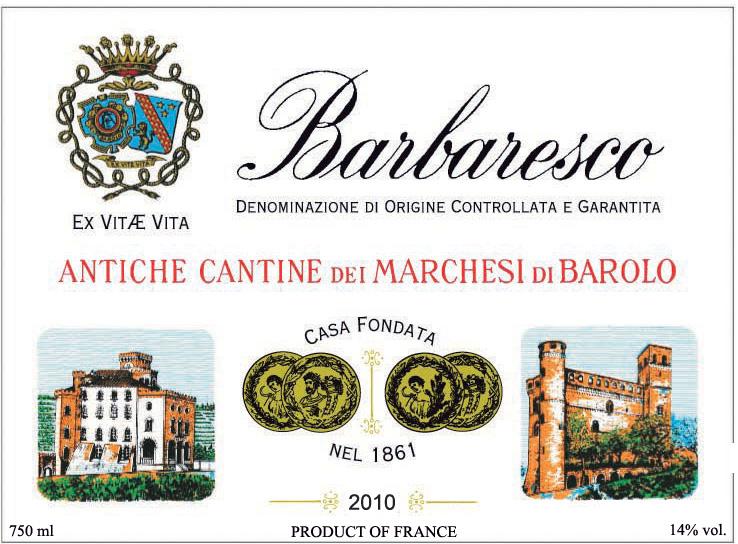2010 Barbaresco 100% Nebbiolo
The 2010 Marchesi Di Barolo Barbaresco is a stunning representation of the Barbaresco region, showcasing the exquisite character of 100% Nebbiolo. This red wine displays a vibrant ruby hue, hinting at the layers of complexity within. On the palate, it offers a full-bodied experience, harmoniously balanced with high acidity that provides a lively freshness, making it exceptionally food-friendly. The tannins are notable yet refined, adding structure without overwhelming the wine's elegance. The fruit intensity is pronounced, with alluring notes of cherry, rose, and hints of earthy undertones, embodying the quintessential qualities of Nebbiolo. Perfectly dry, this wine promises to evolve beautifully with age, making it a delightful choice for both immediate enjoyment and long-term cellaring.
The 2010 Marchesi Di Barolo Barbaresco is a stunning representation of the Barbaresco region, showcasing the exquisite character of 100% Nebbiolo. This red wine displays a vibrant ruby hue, hinting at the layers of complexity within. On the palate, it offers a full-bodied experience, harmoniously balanced with high acidity that provides a lively freshness, making it exceptionally food-friendly. The tannins are notable yet refined, adding structure without overwhelming the wine's elegance. The fruit intensity is pronounced, with alluring notes of cherry, rose, and hints of earthy undertones, embodying the quintessential qualities of Nebbiolo. Perfectly dry, this wine promises to evolve beautifully with age, making it a delightful choice for both immediate enjoyment and long-term cellaring.




